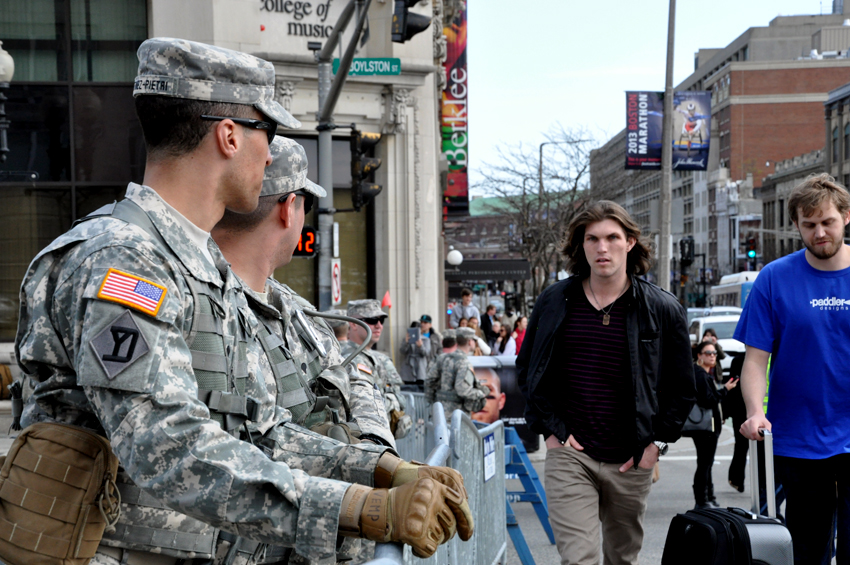The Nature of the Attack Gives Few Clues About Those Responsible
In the wake of Monday’s attack near the Boston Marathon finish line, authorities are still searching for answers: Who was behind such senseless tragedy, and what was their purpose? As rumors about a suspect in custody swirled Wednesday, Jim Walsh, an expert in international security and a research associate at MIT’s Security Studies Program, weighed in:
1. There are a lot of possibilities, and at this point we don’t have enough information to definitively rule many of them out.
Monday’s attack was an act of terror, but that doesn’t mean an organized terrorist organization committed it. “People who aren’t terrorists can commit acts of terror,” explains Walsh. “And as you’re trying to figure out what happened, you have to hold open both the possibility that it [was committed by] someone who has a political agenda, or by someone who has mental health issues and who doesn’t have an agenda.”
“There are lots of possibilities. If it’s terrorism, it might be foreign or it might be domestic,” says Walsh. “If it’s foreign, it could be al Qaeda or another extremist group from the Middle East who were trying to seek revenge for drone killings or other policies in those areas.”
“If it’s domestic, it might be a group like white supremacists, which have a long track record here,” says Walsh. “It might be domestic individuals who are unaffiliated with extremism, but for whatever [reason] feel sympathetic and [are] acting out on their own. Or it might be domestic folks with a domestic agenda, or that are sympathetic to others outside the U.S. even if they’re not directly connected to them.”
At this point, we just don’t know.
2. The nature of the attack doesn’t give investigators a lot to go on.
The attack was relatively small in scale: “The explosives used were not weapons grade. They were relatively low to the ground so they couldn’t kill as many people as they could have if they were higher. They didn’t detonate until two hours after many of the runners crossed the finish line,” explains Walsh. “Someone could point to all that and say this group isn’t competent.”
“On the other hand, there were simultaneous multiple explosions,” says Walsh. “And someone could look at that as a sign of sophistication.”
In some ways, the small scale of the attack actually makes it more difficult to identify its perpetrator. “The more sophisticated an attack, the more it would rule out certain possibilities. The more particular the design, the greater the chance that we could associate it with one terrorist group or another.”
3. That no one has taken responsibility for the attack doesn’t tell us a lot, either.
“If you look at the record in the past, it’s all over the place in terms of people taking responsibility,” says Walsh.
4. In the meantime, all we can do is to continue to help investigators and victims.
“The first order of business is to respond to the law enforcement. If you were at the event, and you have photographs and any data relevant, then you should share that with the police,” says Walsh. “And if any your loved ones or colleagues or acquaintances talked about the events or gave you reasons to be suspicious, then you should report it.”
“And lastly, people should continue to do what I’ve seen unfold: They should support the families who’ve suffered as a consequence of this. They’re going to need our support next week, next year, and for years to come. We need to steer our emotional energy into that, so that these folks aren’t left on their own once the cameras turn to the next story. And if we do that, that will be a tremendous accomplishment.”


